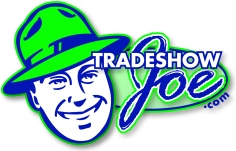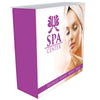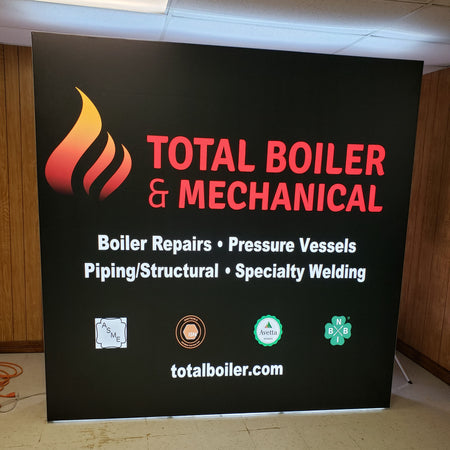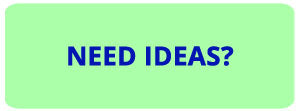Coyote Pop-up Display Video Review
For more details, visit our pop-up displays product page.
Transcription:
Hello, and welcome to TradeShowJoe.com Video Series. I'm Dan Riley. Today, we're going to talk about pop-up display structures. Pop-up displays have been around awhile and they are the workhorse of the display industry. They were probably developed close to 25 years ago. Today, we're going to show you some of the feature benefits of our popular selling Coyote Pop-up. So lets' have a look.
This is our Coyote Pop-up. These come in variety of different sizes - anything from a small table top application (which I'm going to show you today) all the way up to a large, linear display, which will span 20 - 30 feet. They come in a curved and flat configuration. A standard kit, when you get it from us, is basically going to include an aluminum frame (tubular, easy to work with, and strong), a molded plastic carrying case with wheels (so that everything is nice and going to be protected when you ship it to your show), magnetic channel bars (which are going to reinforce the framework, and are the means by which you marry the graphic panels or fabric panels onto the framework, and the panels. We have the ability to do Velcro receptive panels in a variety of different colors, or we can make custom graphics for your application. So, lets' take a look at what this display is, and how easy it is to put it together.
The way the Coyote Pop-up works is you've got an aluminum frame the opens up and connects with two little rare earth magnetic clasps. After that, you are to put on magnetic channel bars. These require and come with rare earth magnets that allow the channel bars to press nicely in a vertical orientation onto the Coyote framework. This is a 6 foot pop-up system, and they require 10 channel bars in all. If you have a bigger system, you have more channel bars, but it is in essence the exact same thing. The next step after applying all the channel bars is to connect the panels. The panels have little hooks at the top that go onto little plastic pins to allow it to connect nicely across the top of the display structure and they simply hang down from top to bottom and connect onto the structure with magnets. That's basically it. That's how you make these things work. They can then accept graphics. They are all Velcro receptive, a lot like commercial grade carpeting, and graphics can be applied with Velcro or full panels can be made that connect in place of the fabric panels with magnets and not just across the top, that allow one to take the place of the other. So, that offers a real nice sleek design, all on the same pop-up structure. We offer this particular unit with lights. You have the option of being able to upgrade to lights in either an LED or halogen configuration. A light is a great way to be able to nicely illuminate your graphic design message. We recommend you take a look at the light options we have to go along with this particular display.
In summary, pop-up displays offer a lot of bang for the buck. They are easy to disassemble and assemble. They are modular. You can make the graphic interchangeable for them. You can use Velcro and attach graphics or use full length graphic mural panels. They've been a pretty important part of trade show marketing for several decades. They are not going away. They still are a great way to be able to display your message. Thanks for taking the time to watch the video and learn more about the Coyote Pop-up Display. We welcome you to visit our website at TradeShowJoe.com to be able to direct chat with us once there, contact us via our toll-free number, or to email us at any time.








































Comments